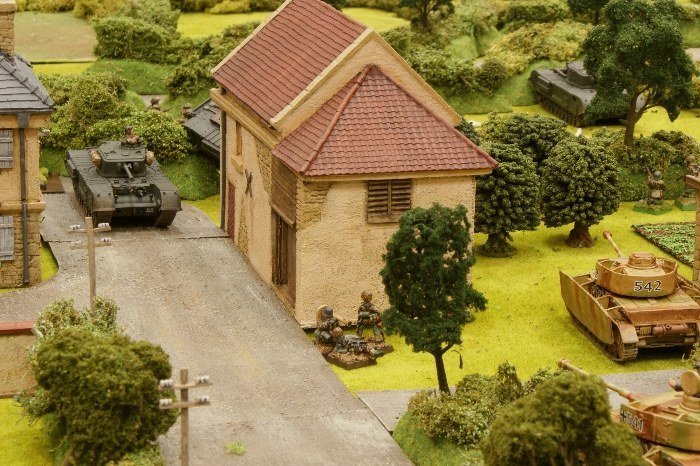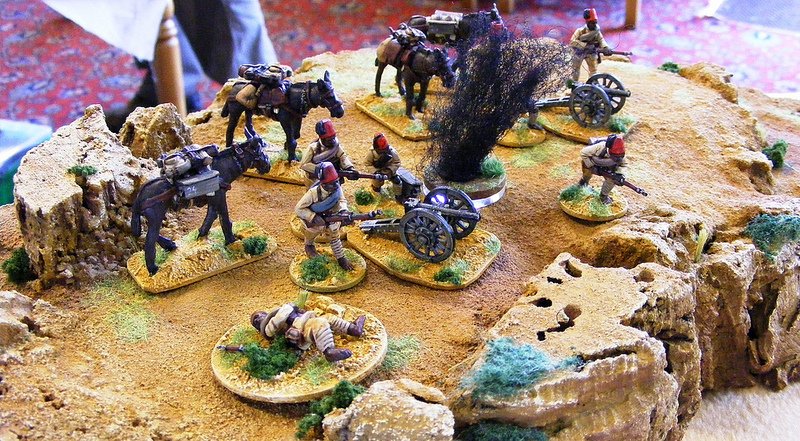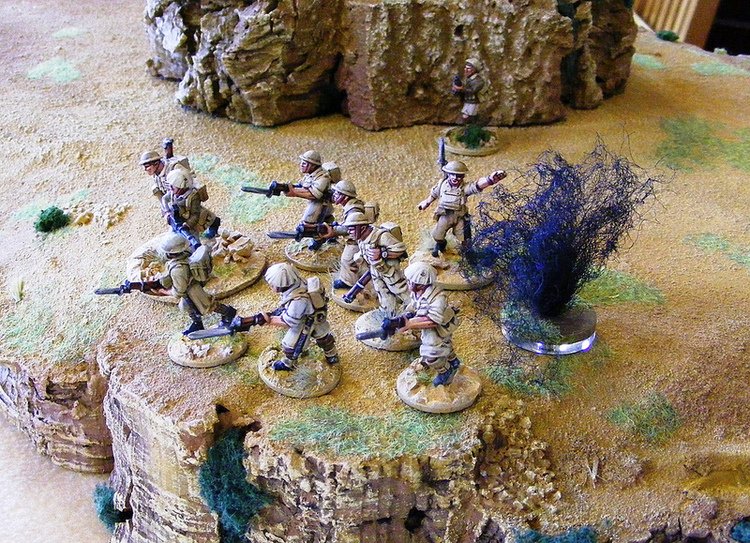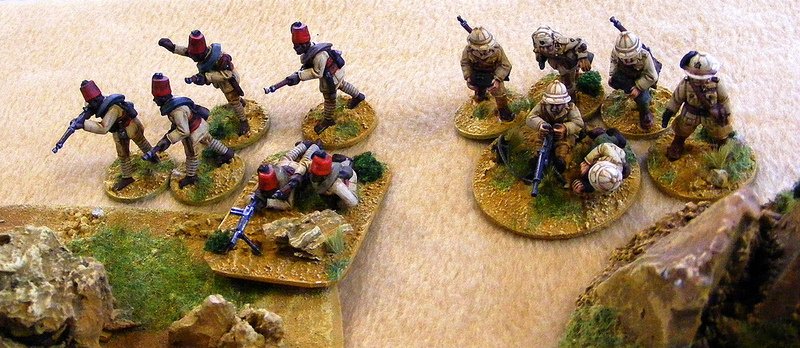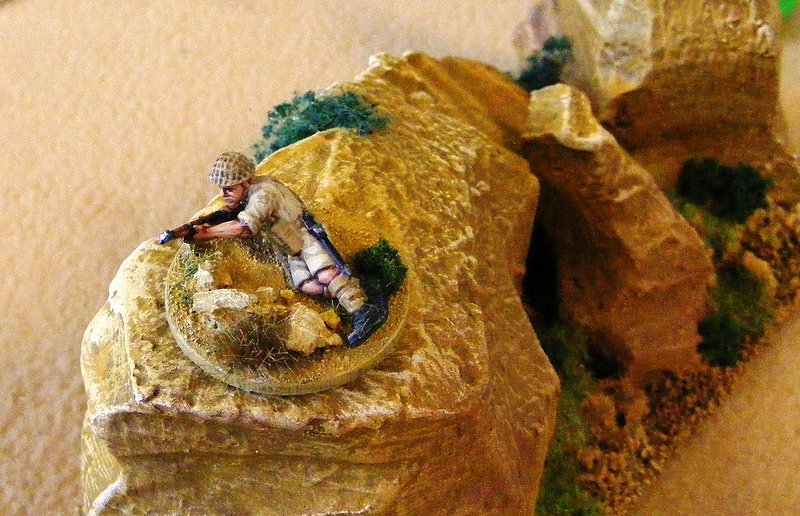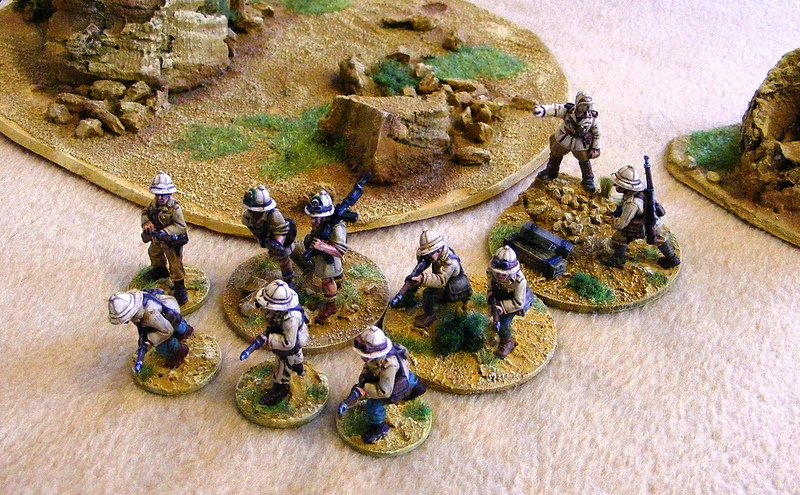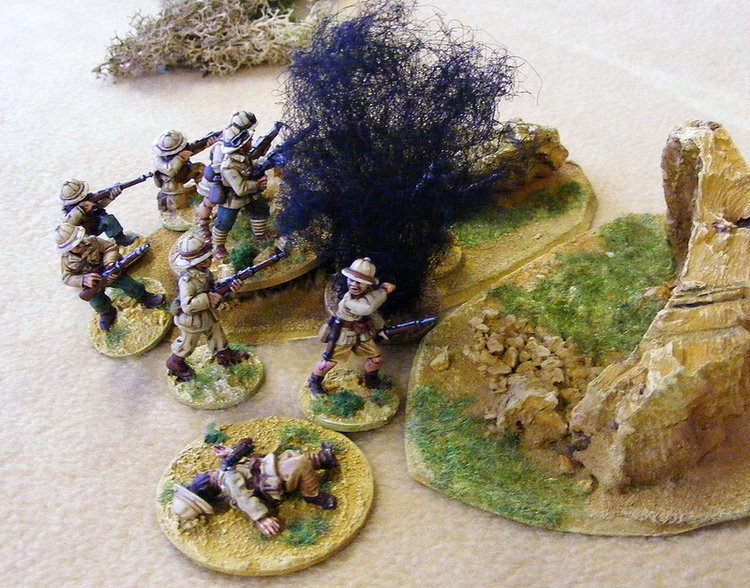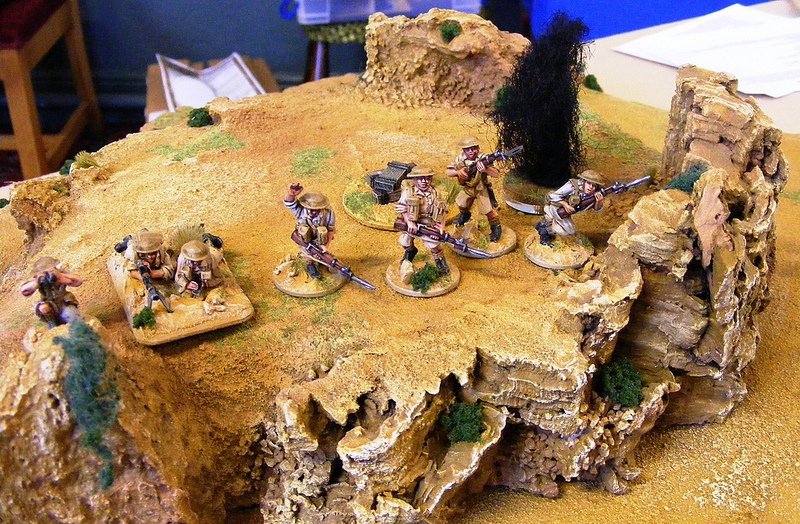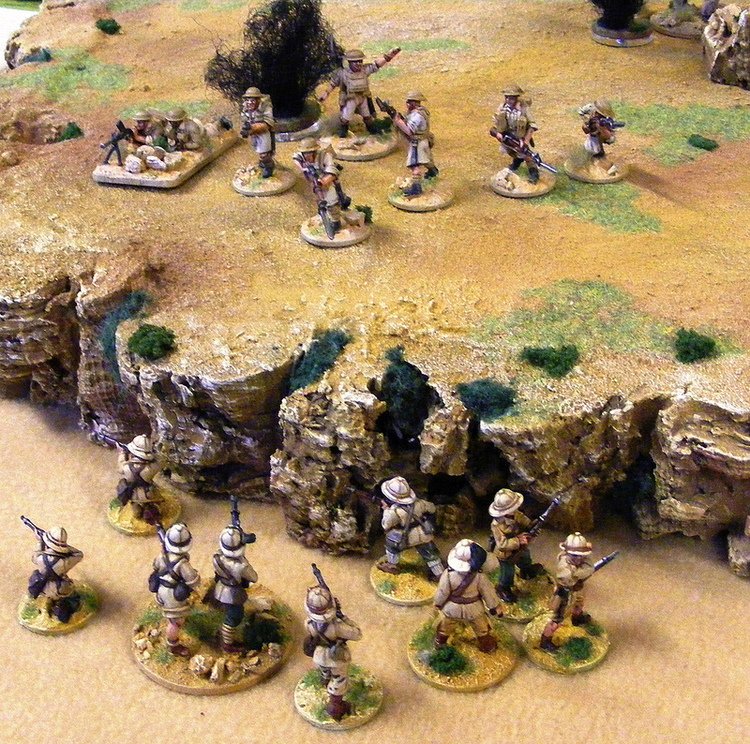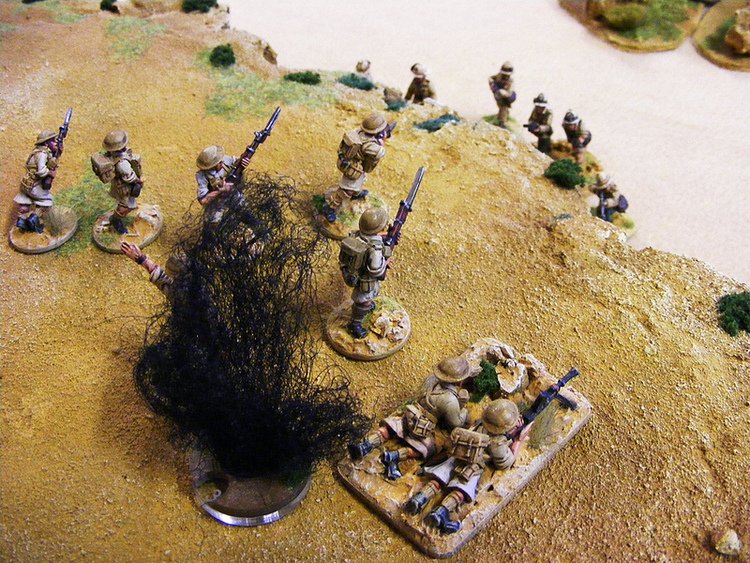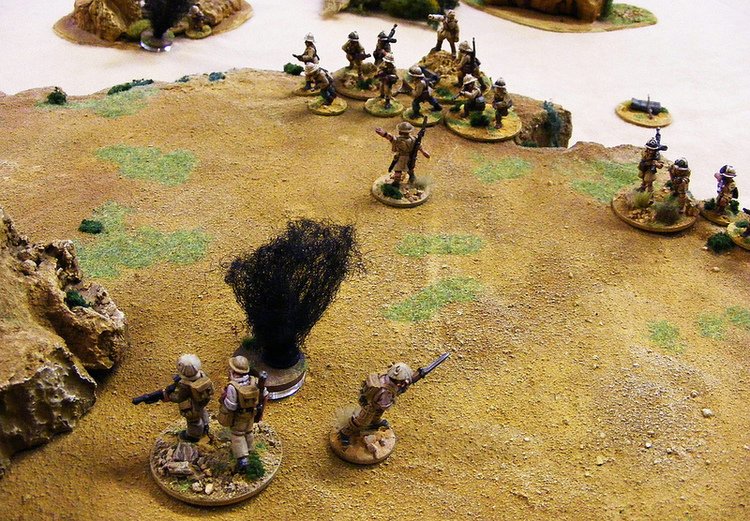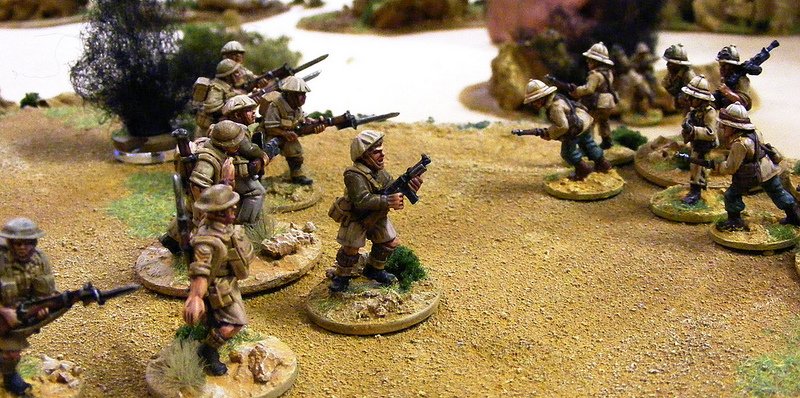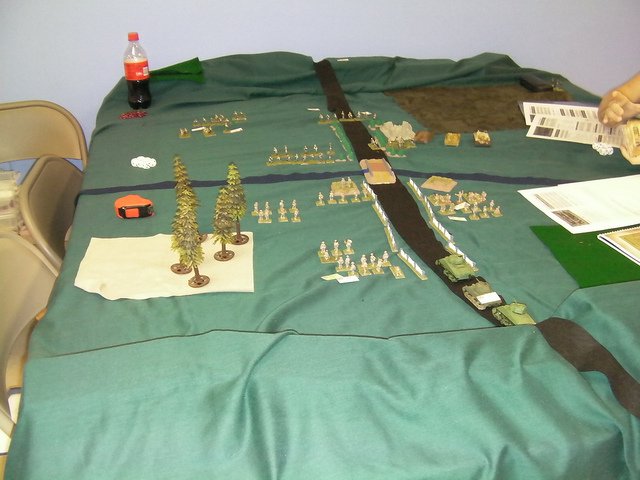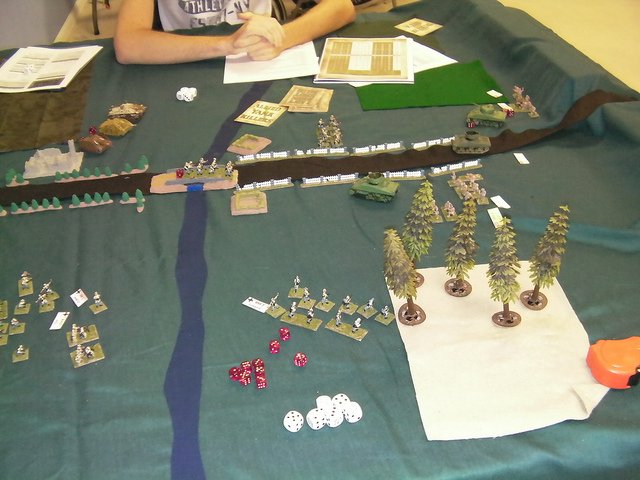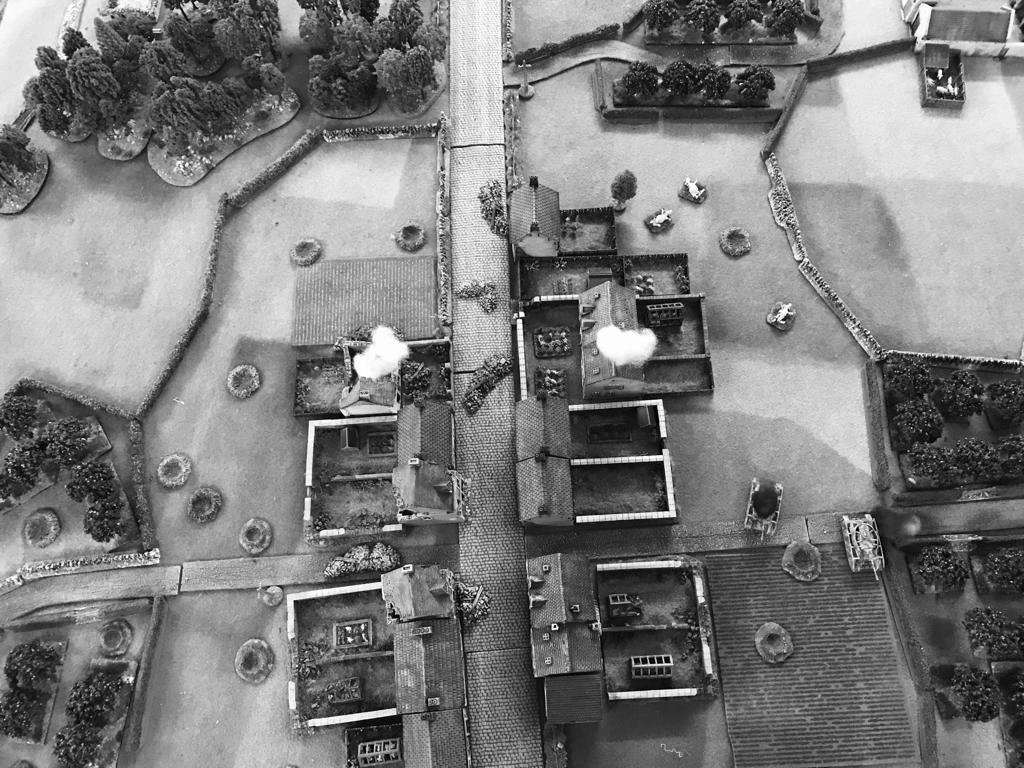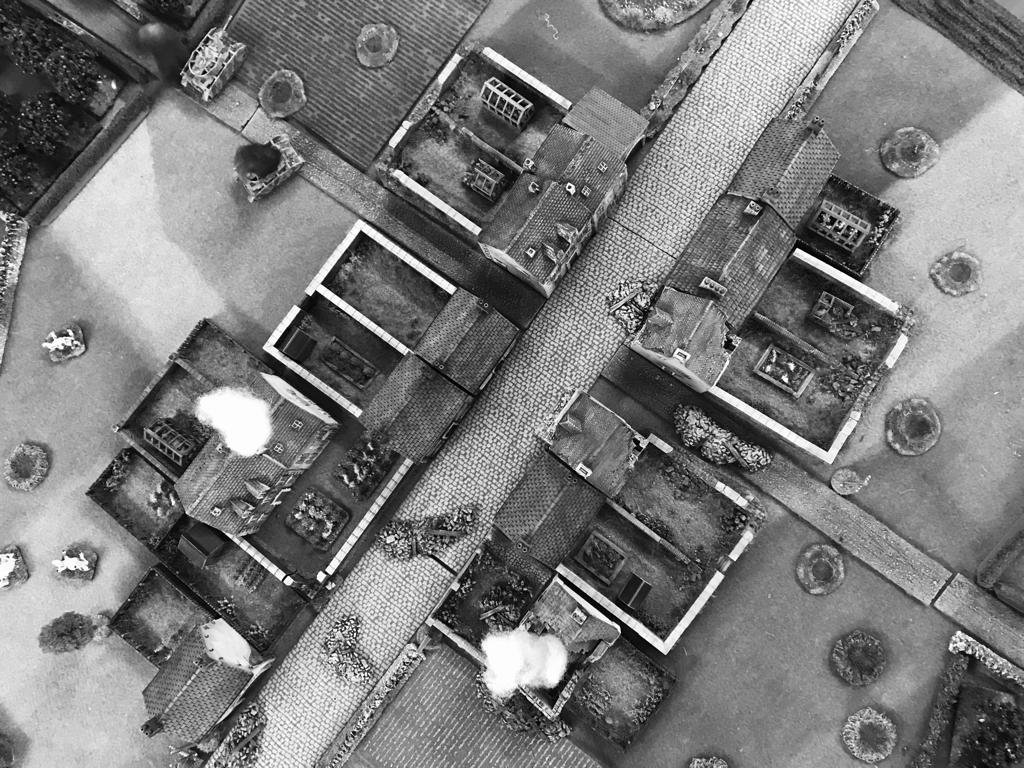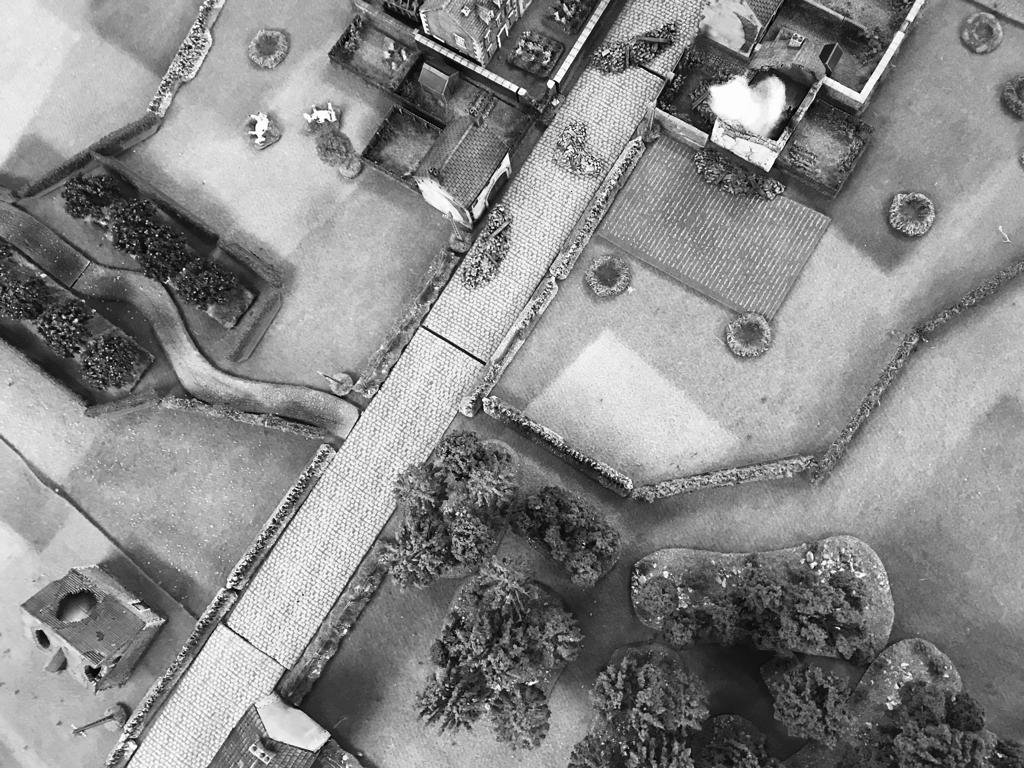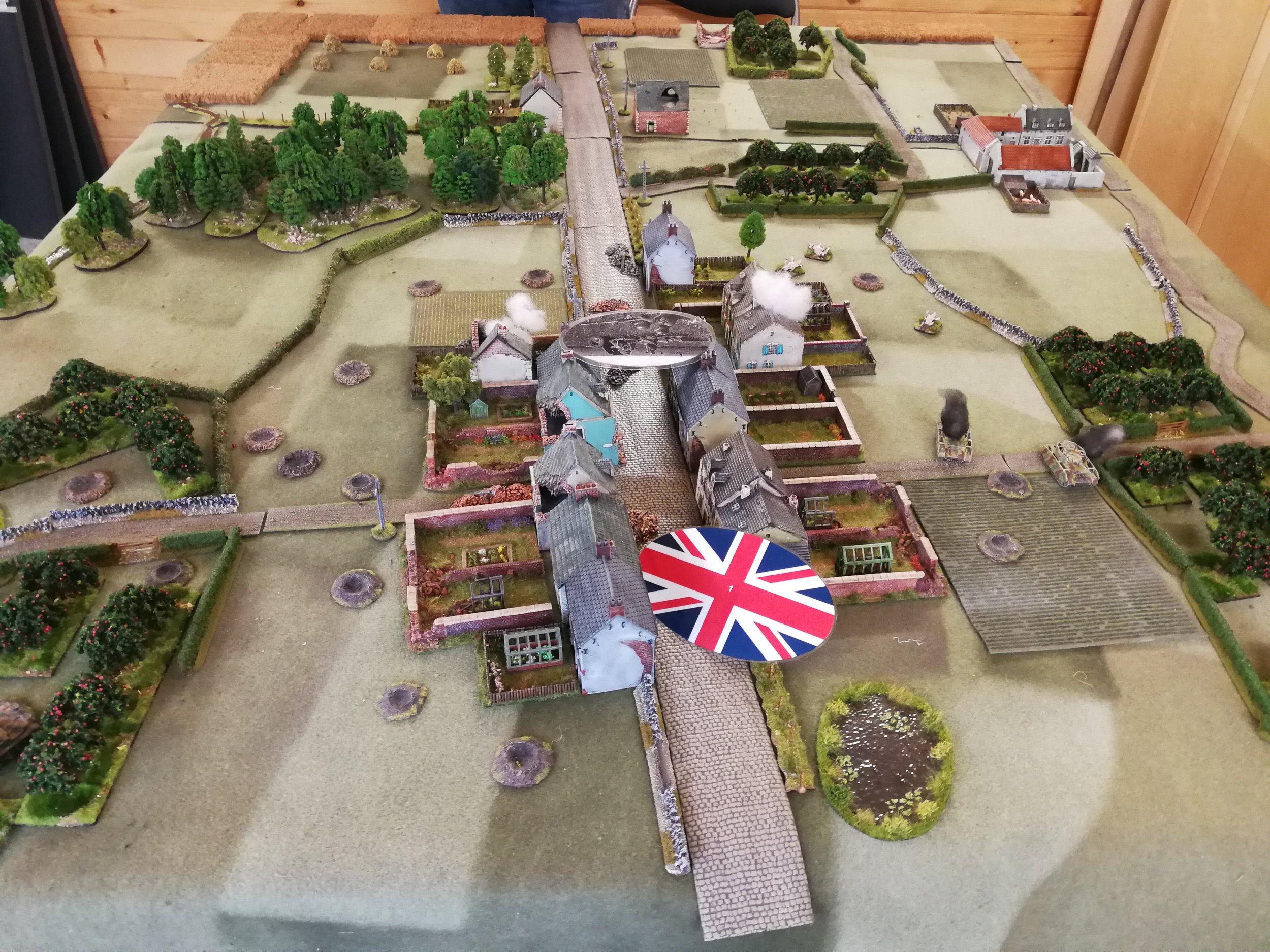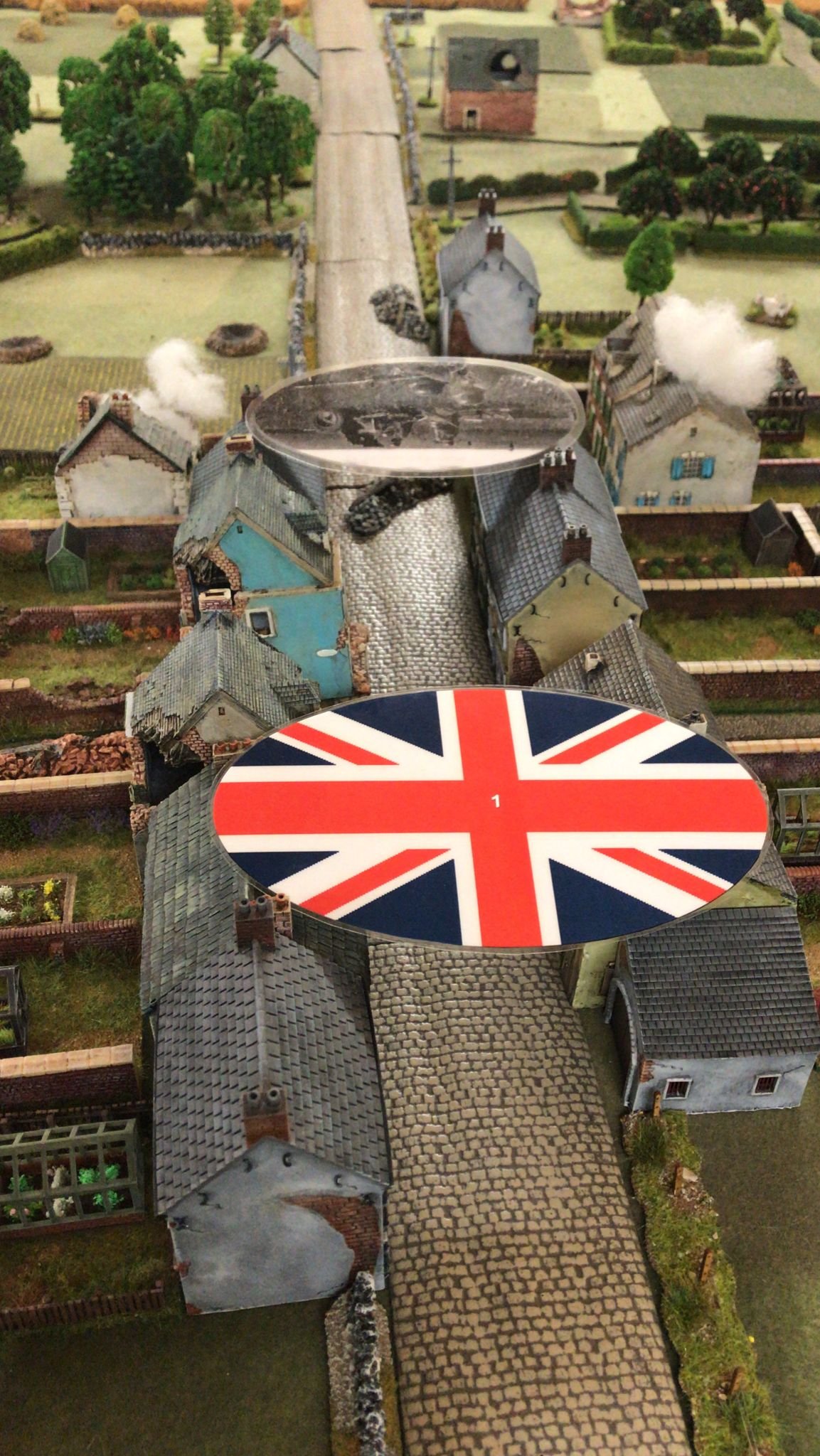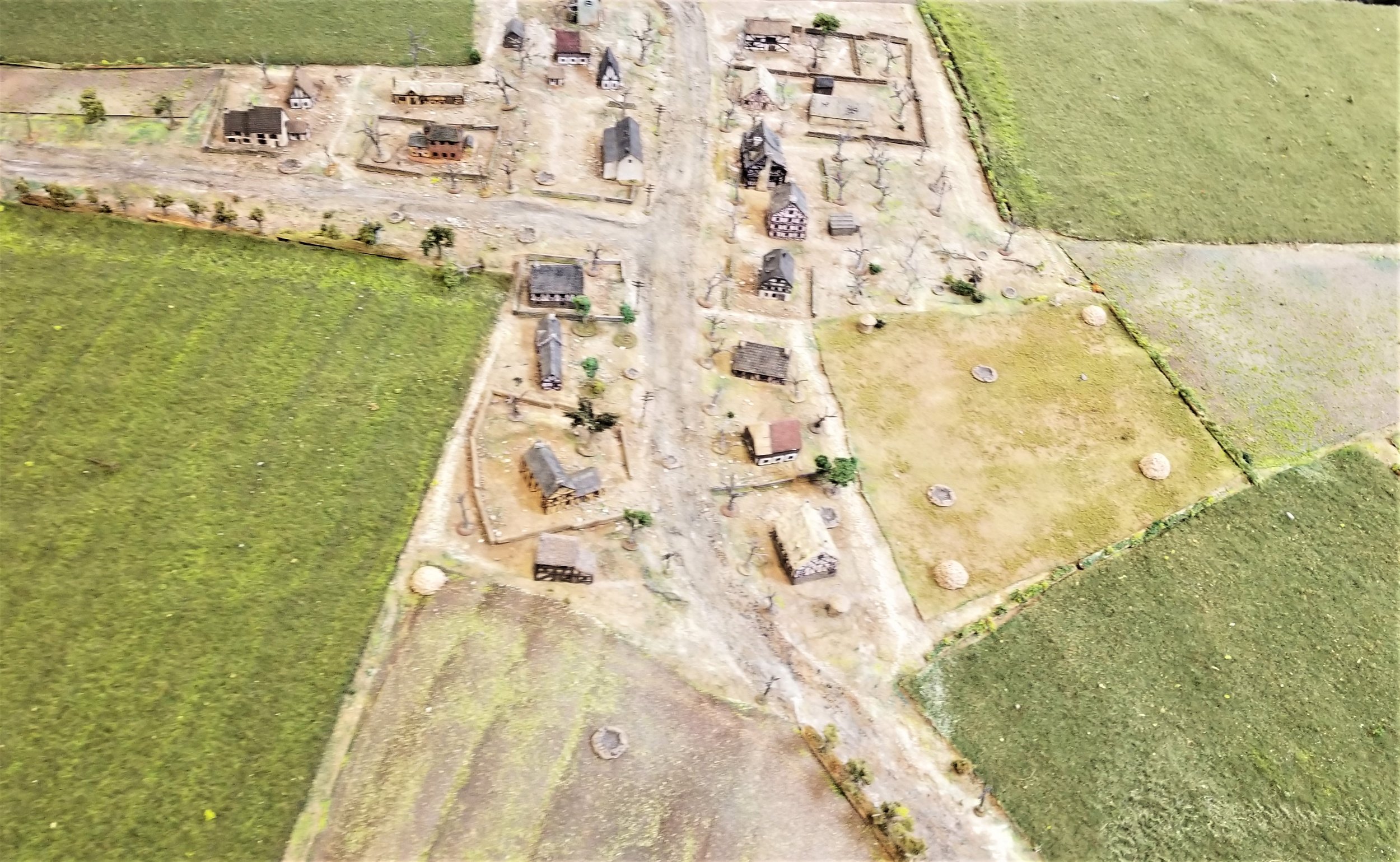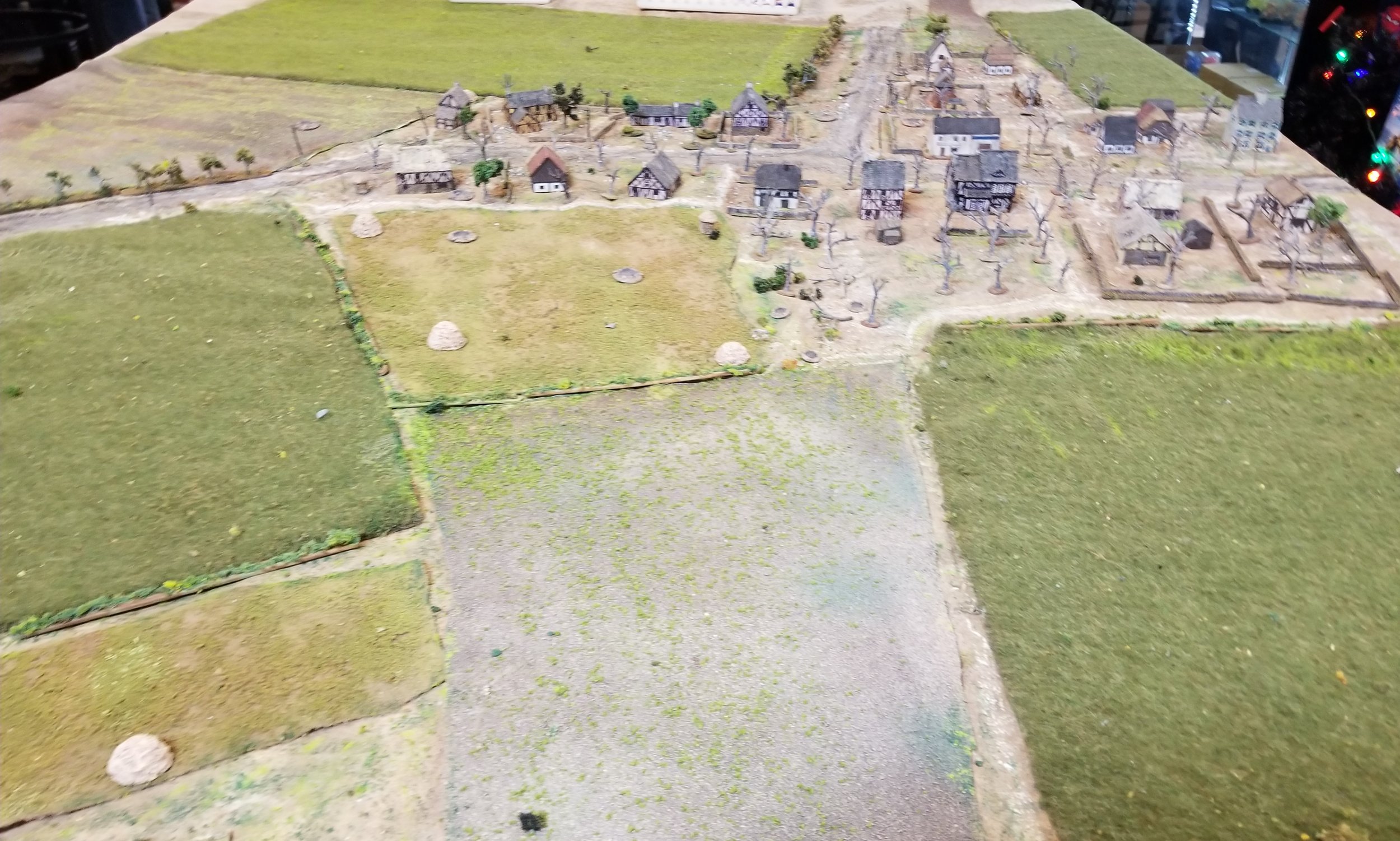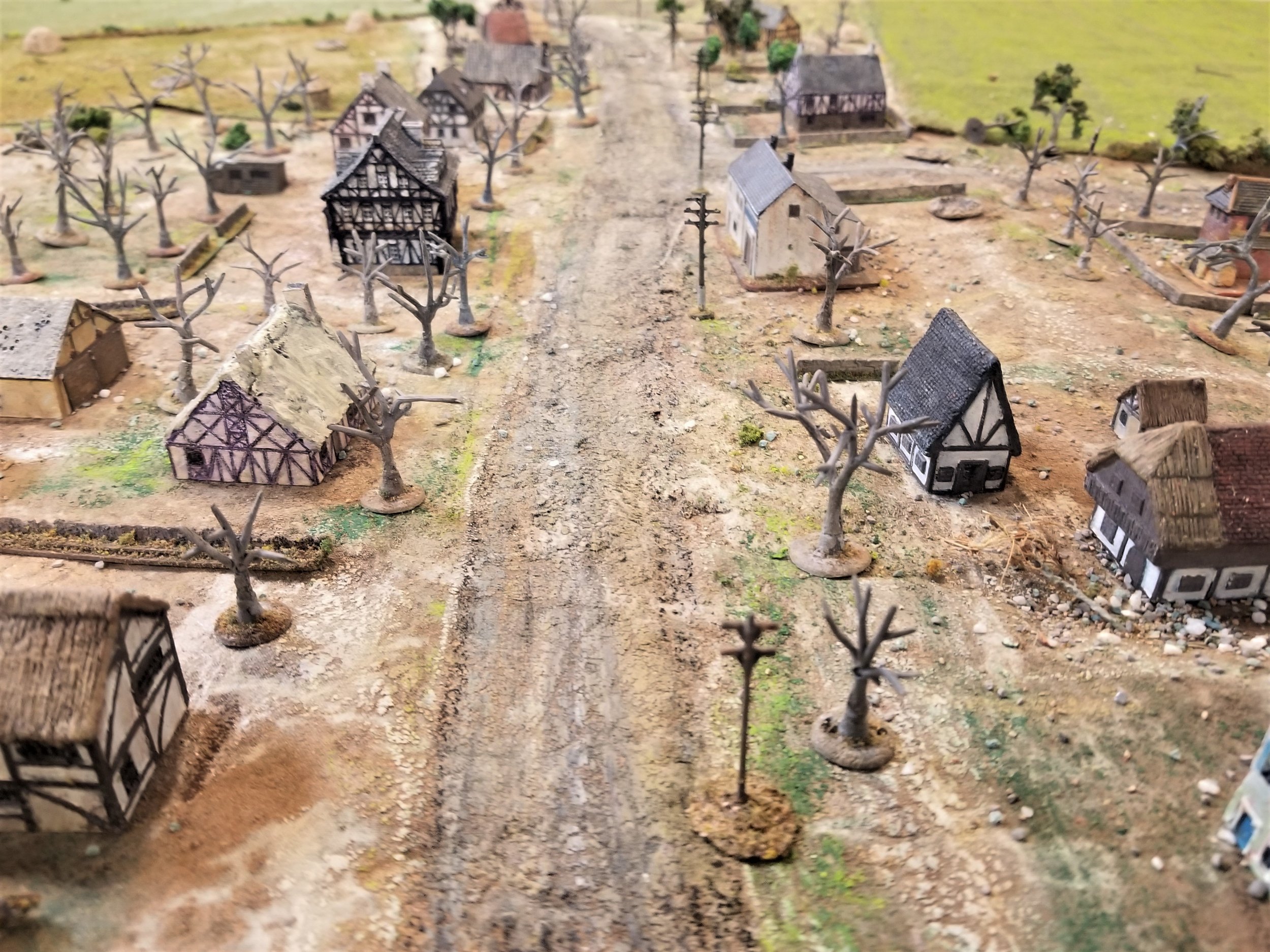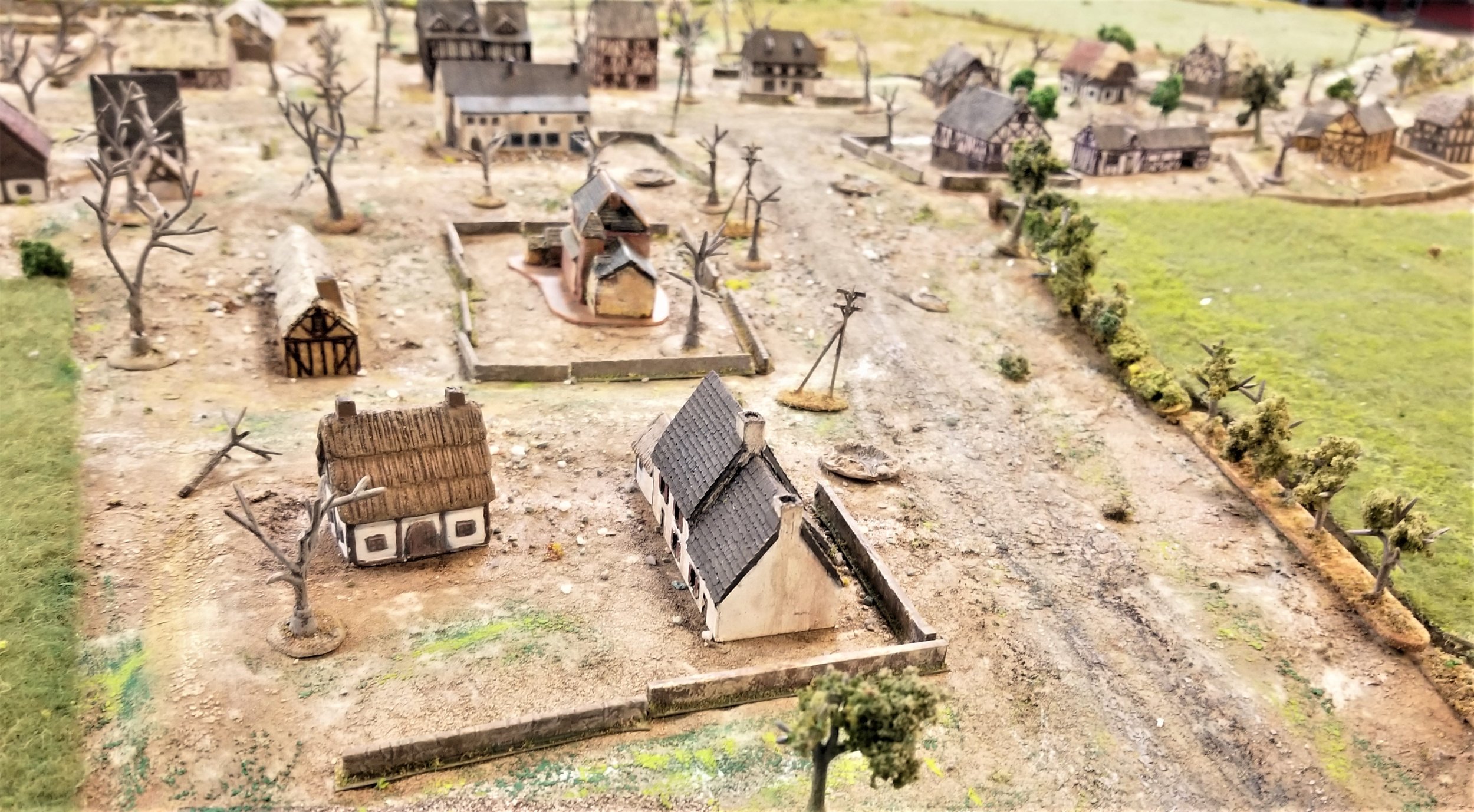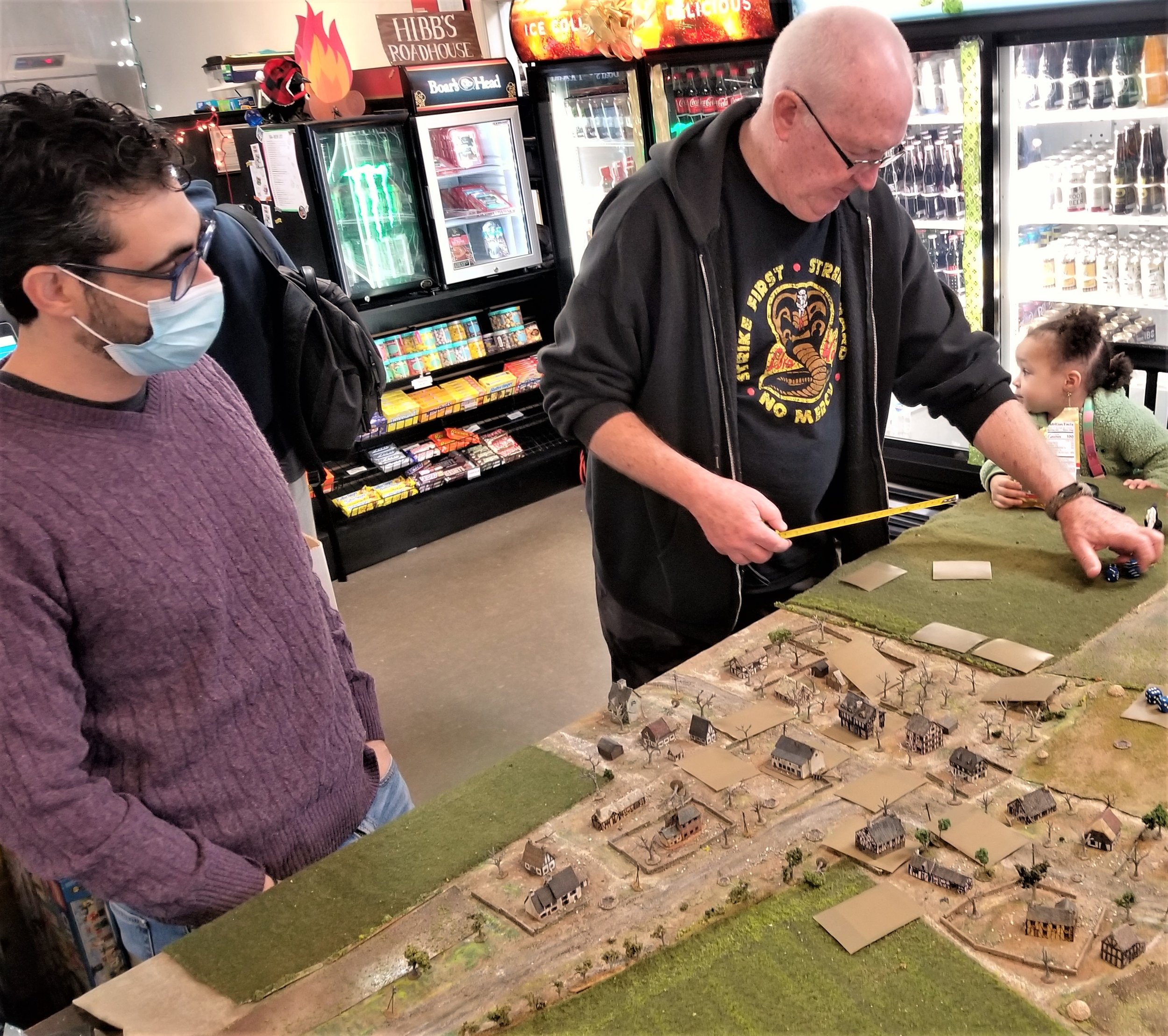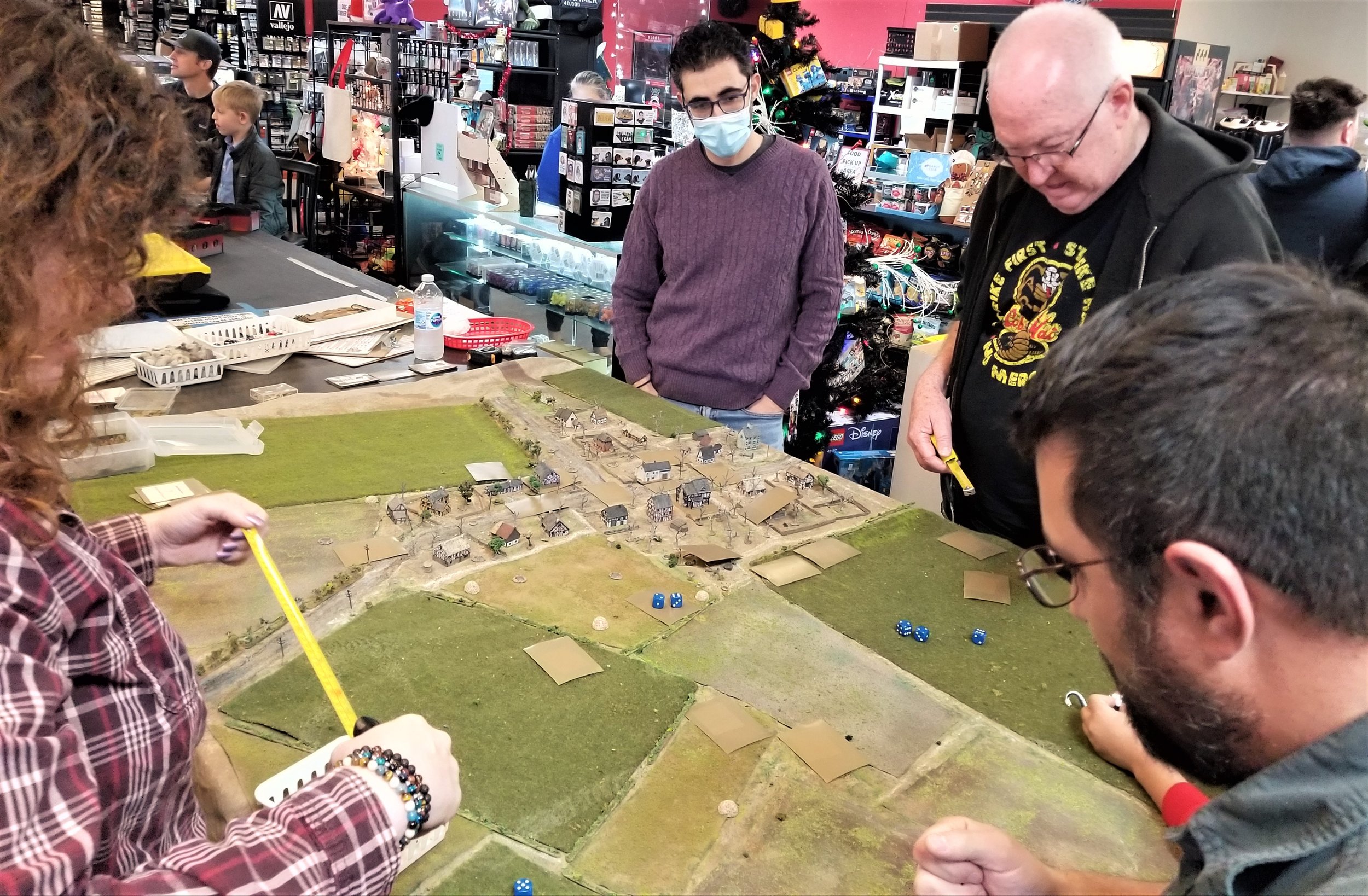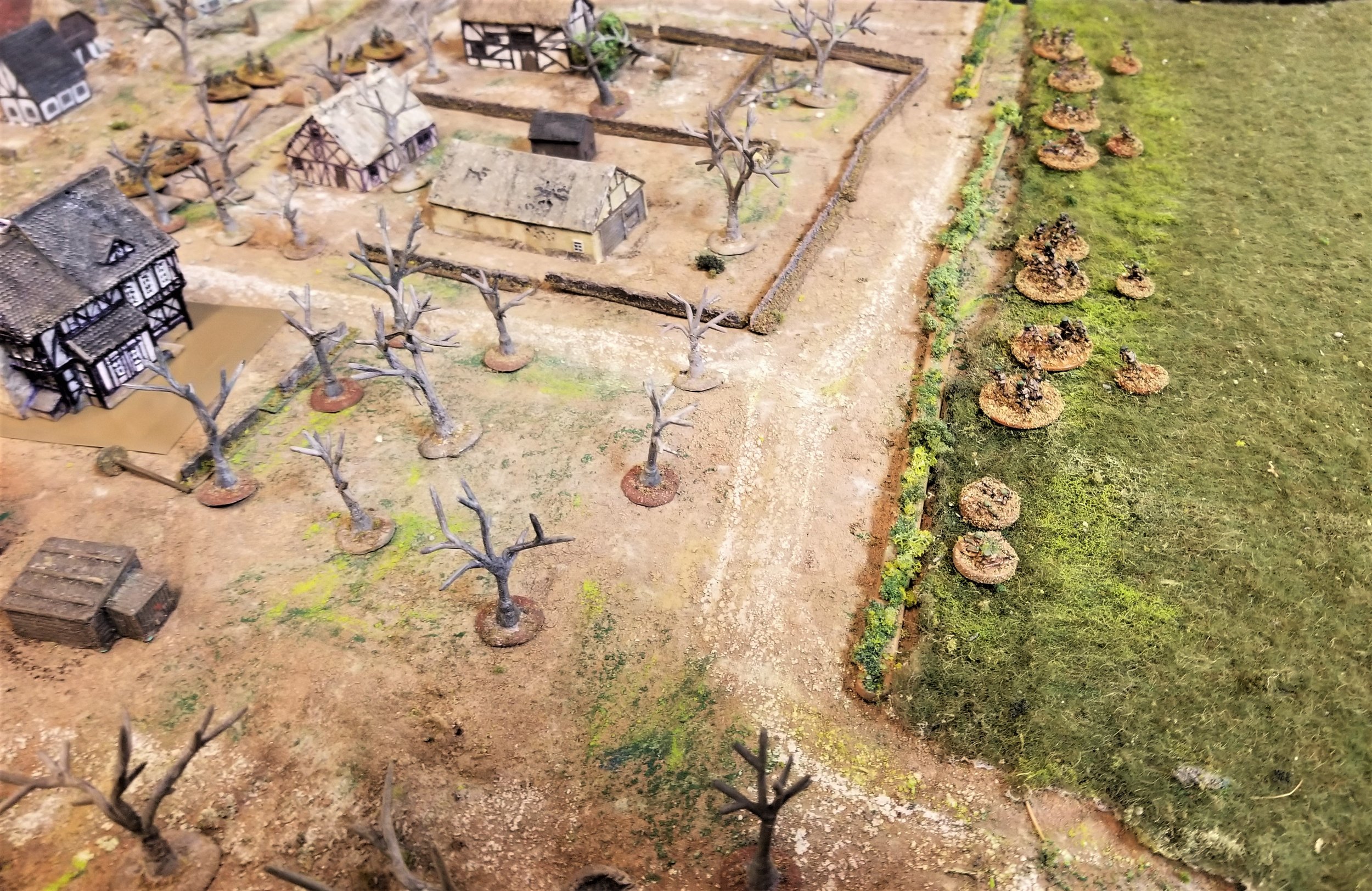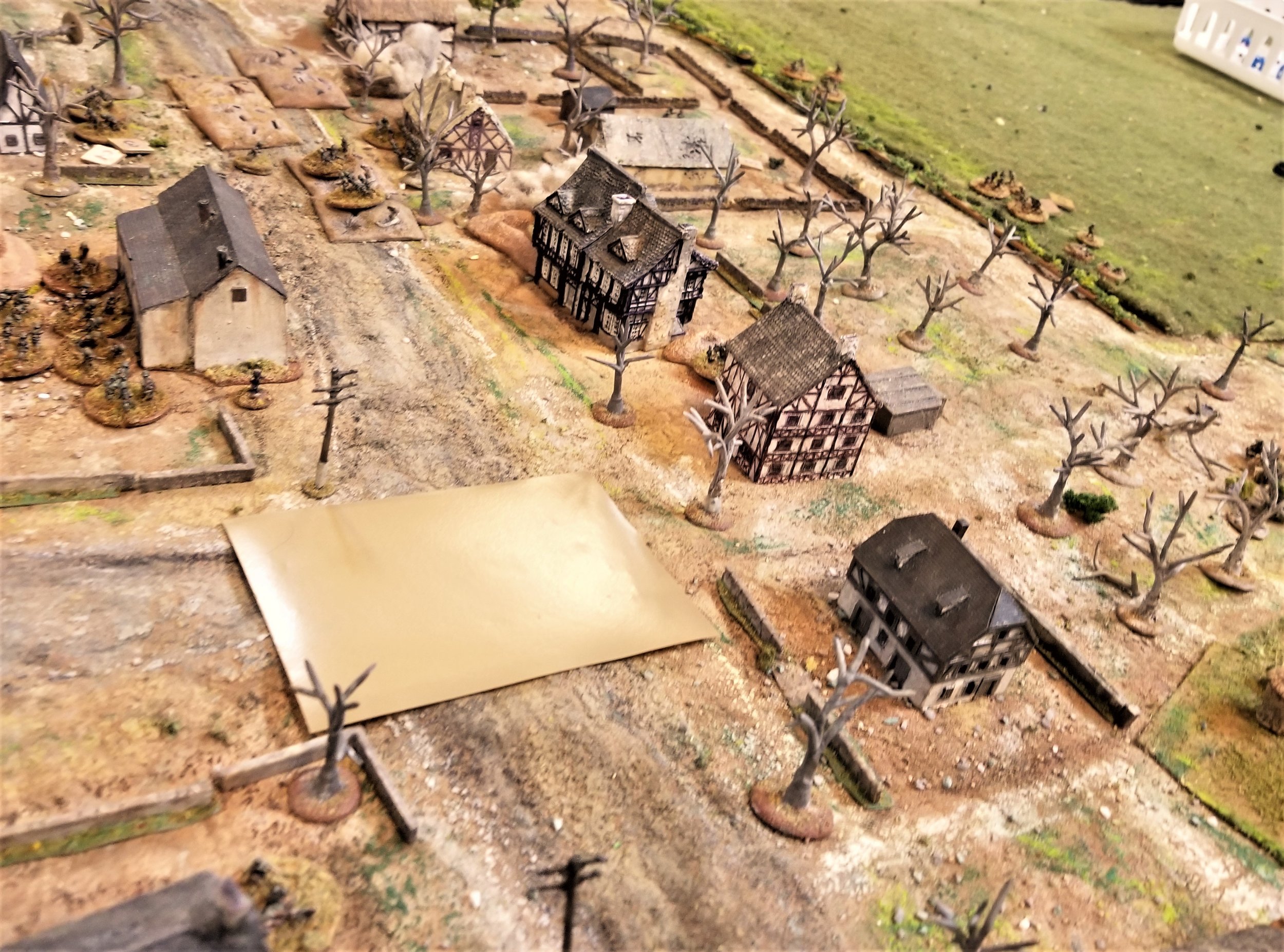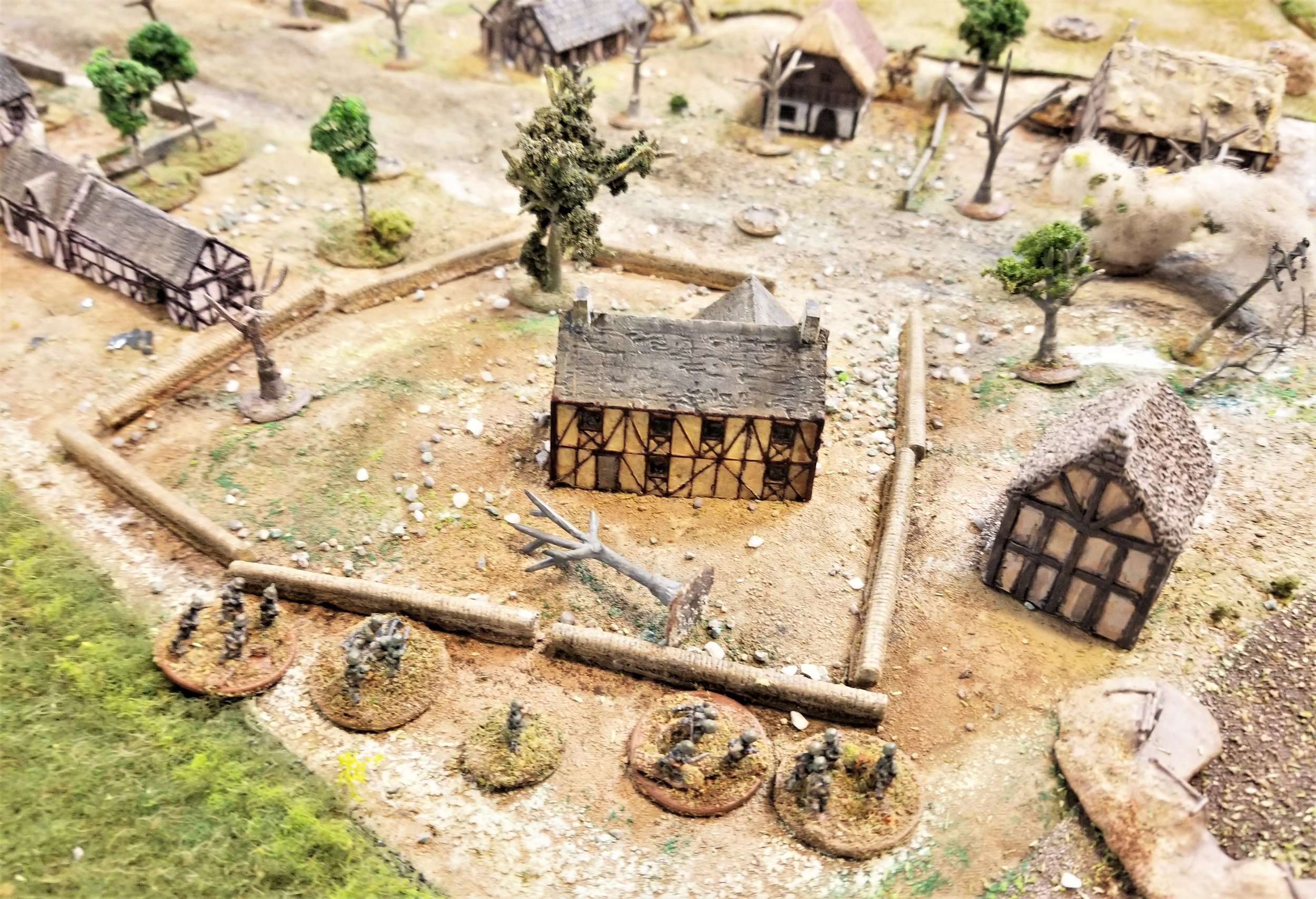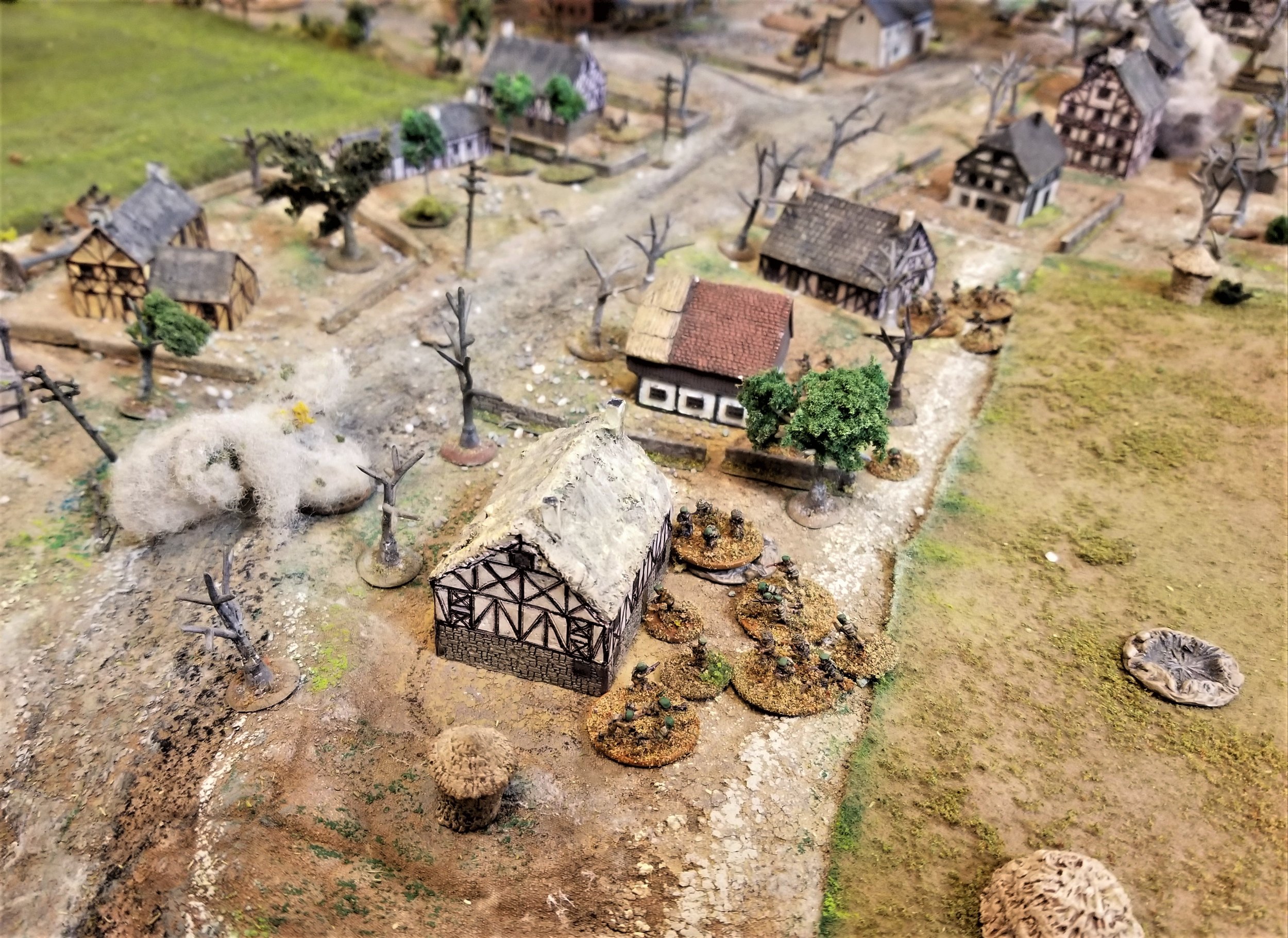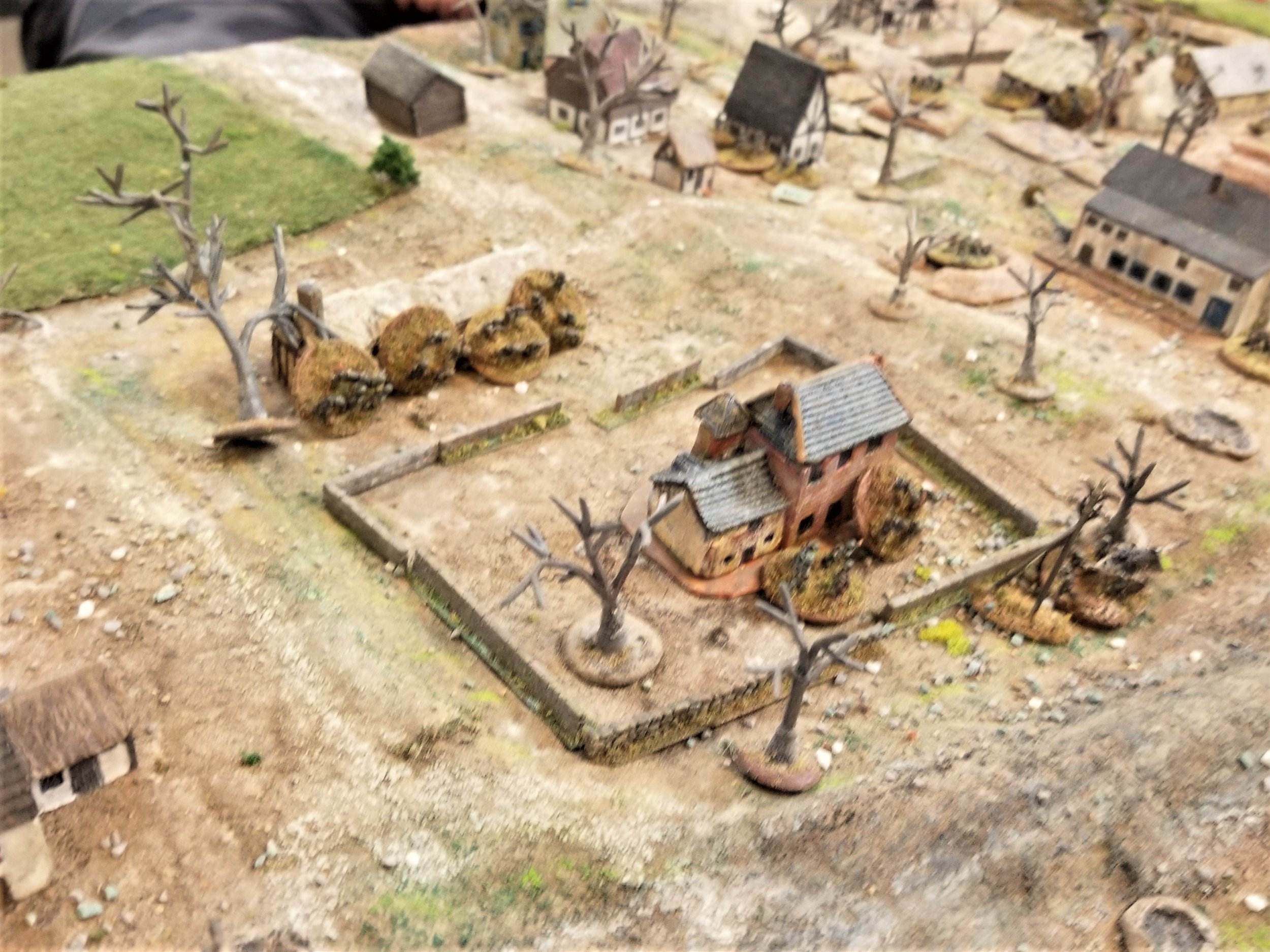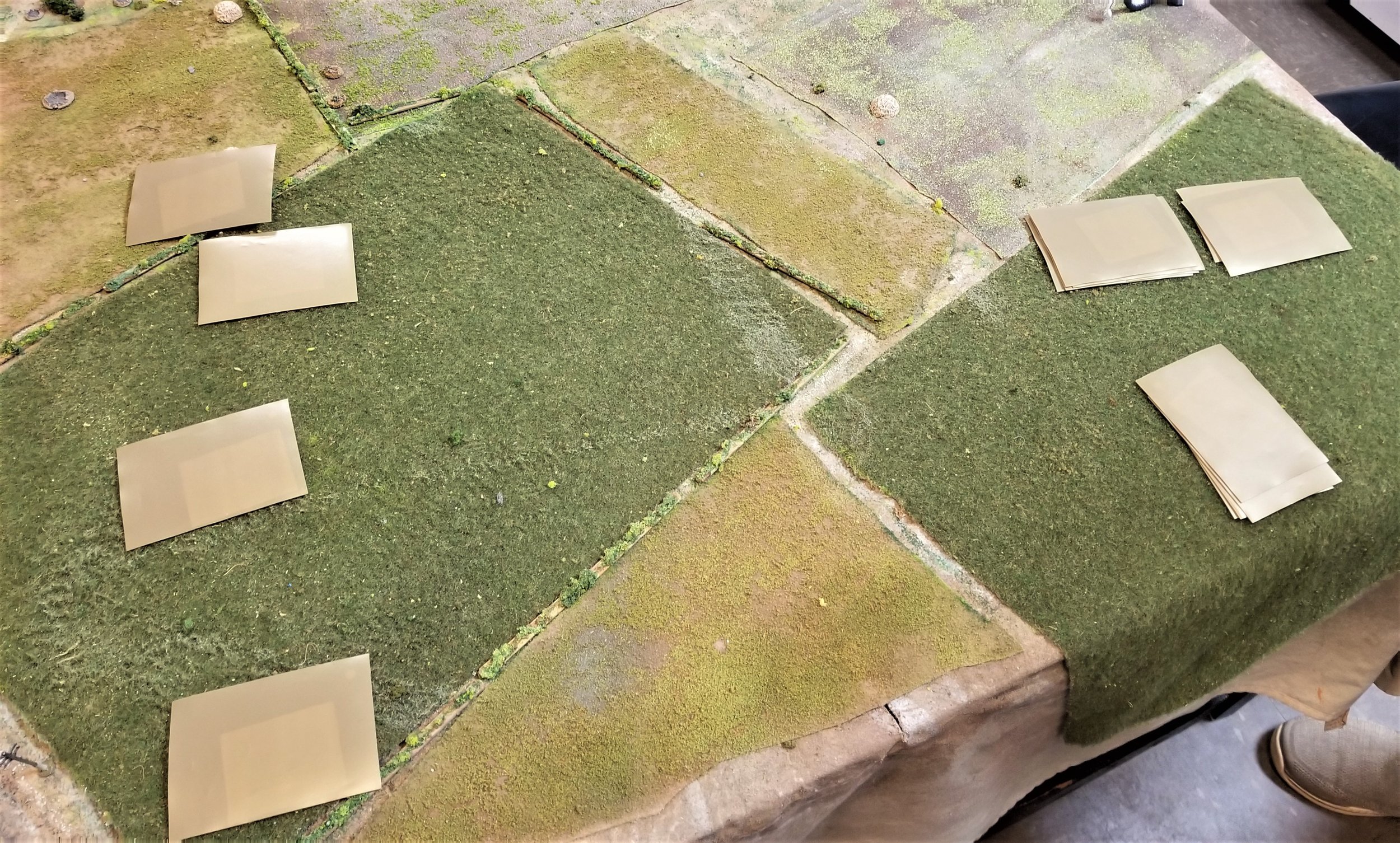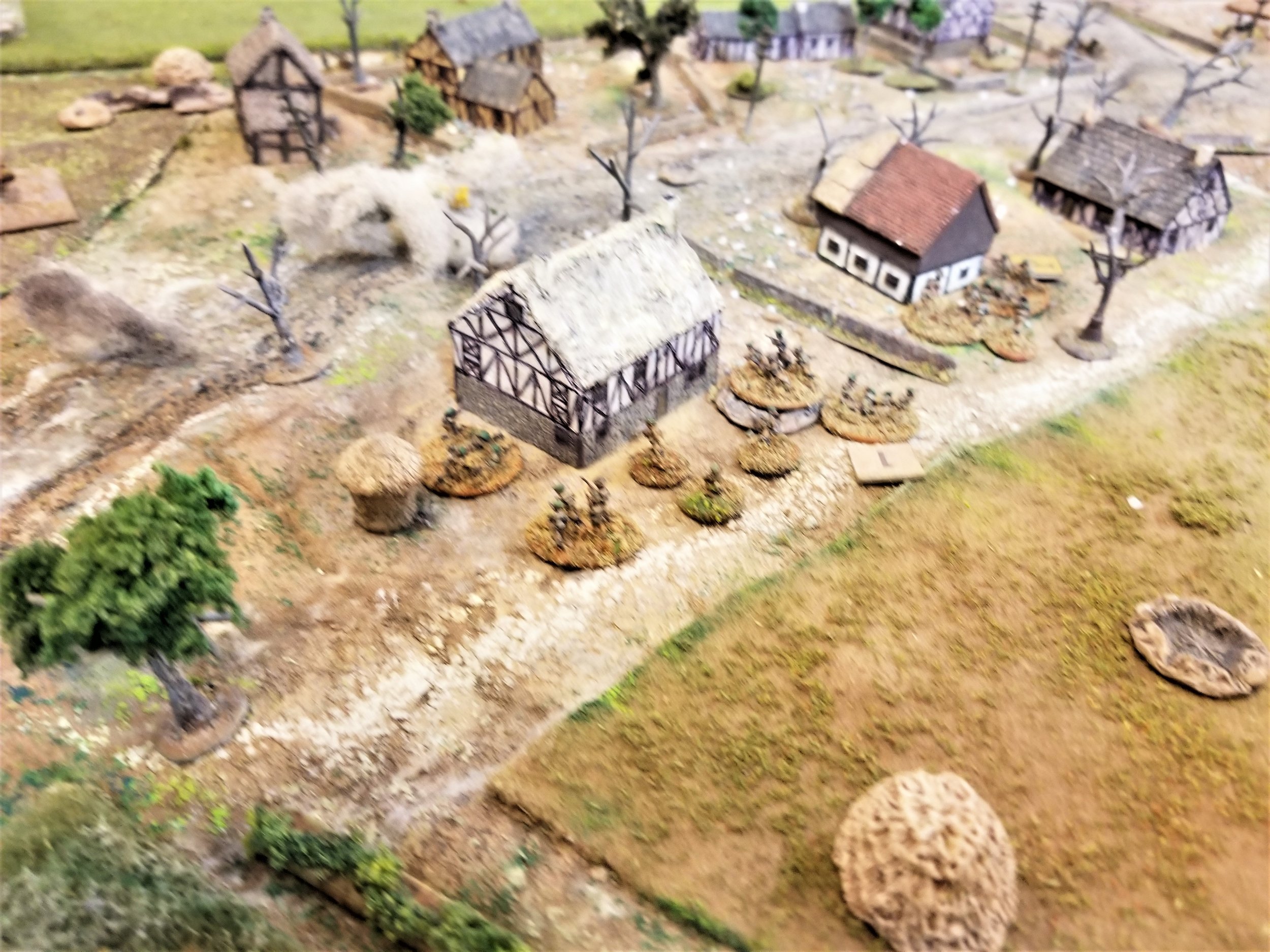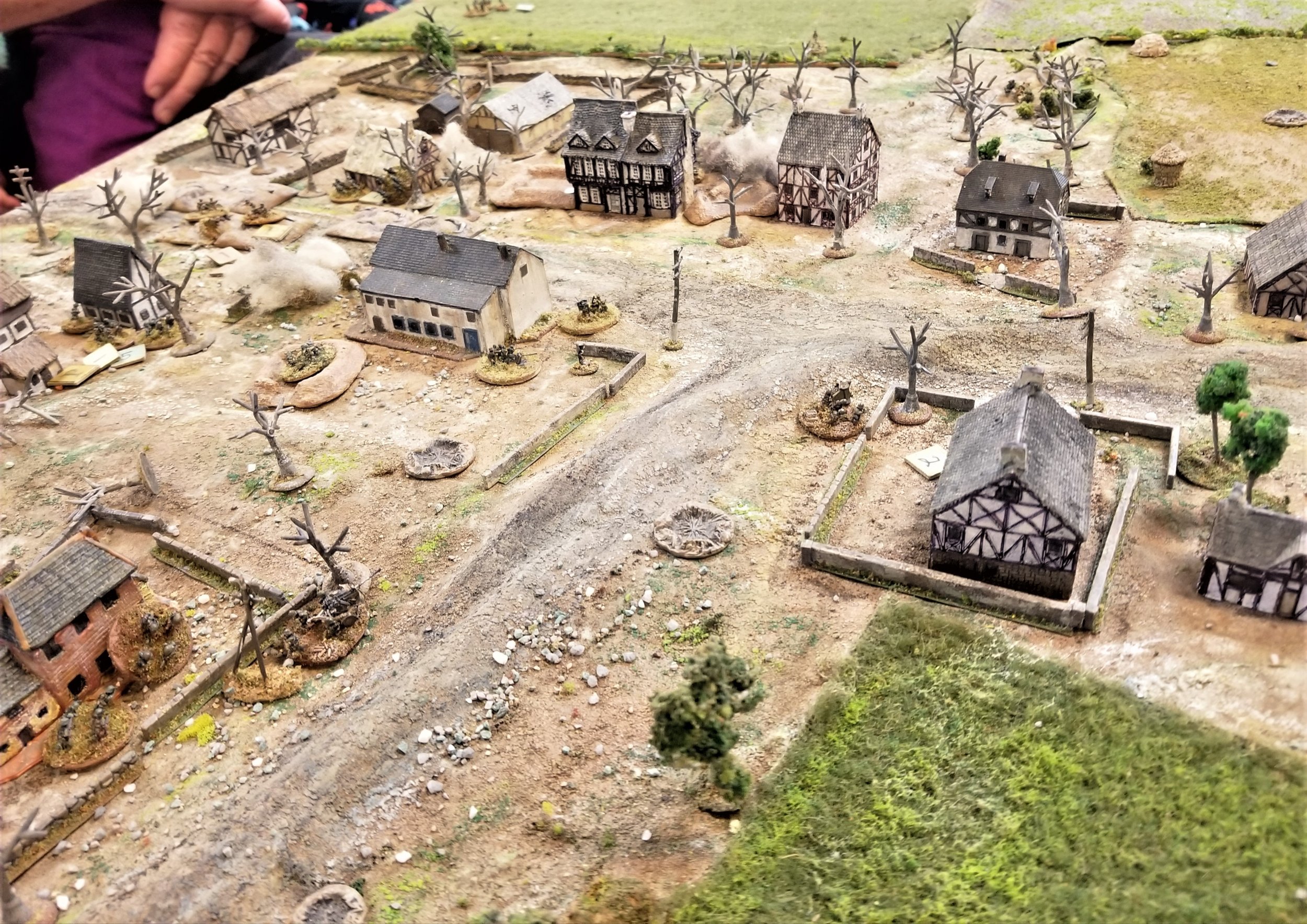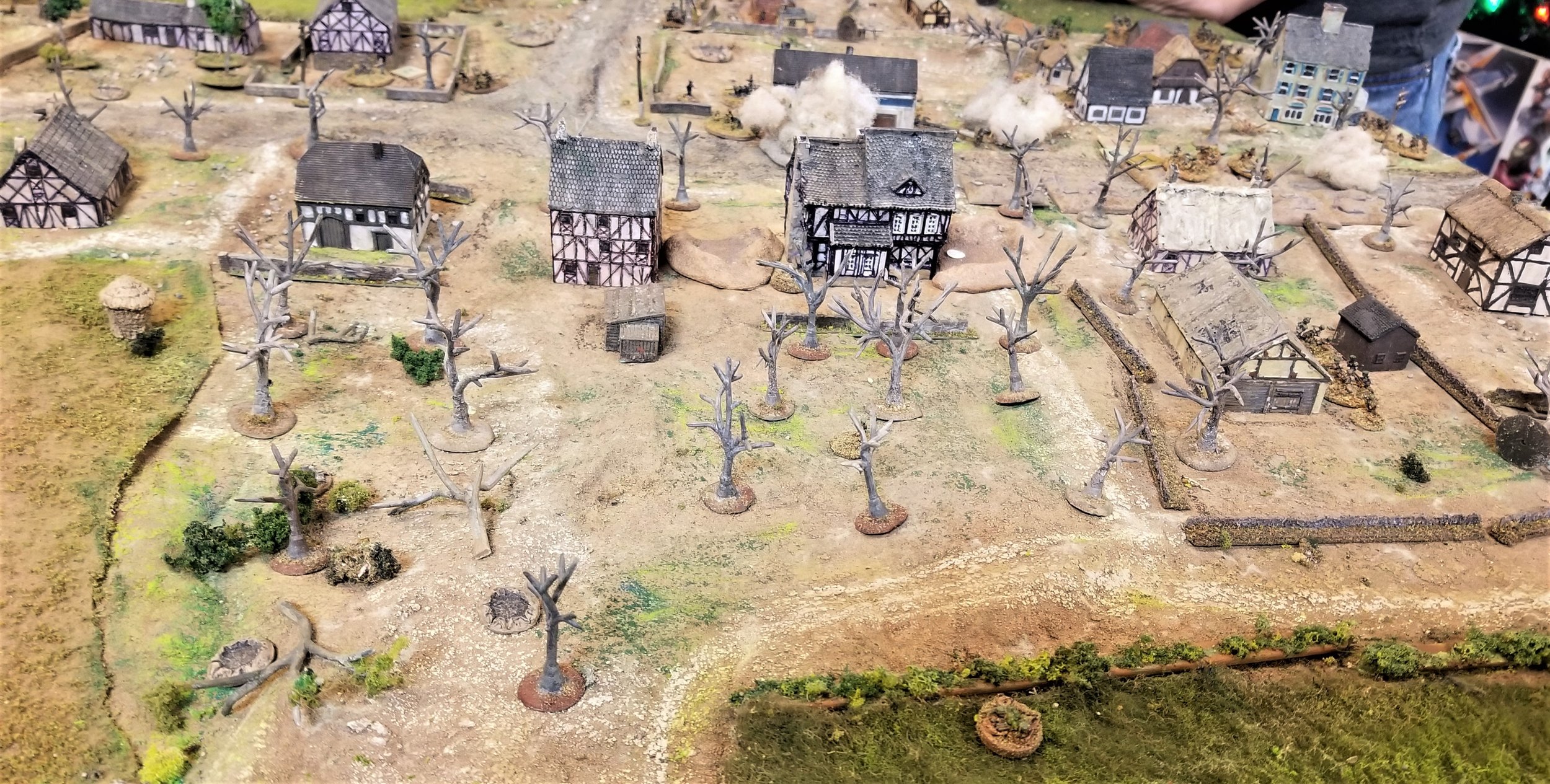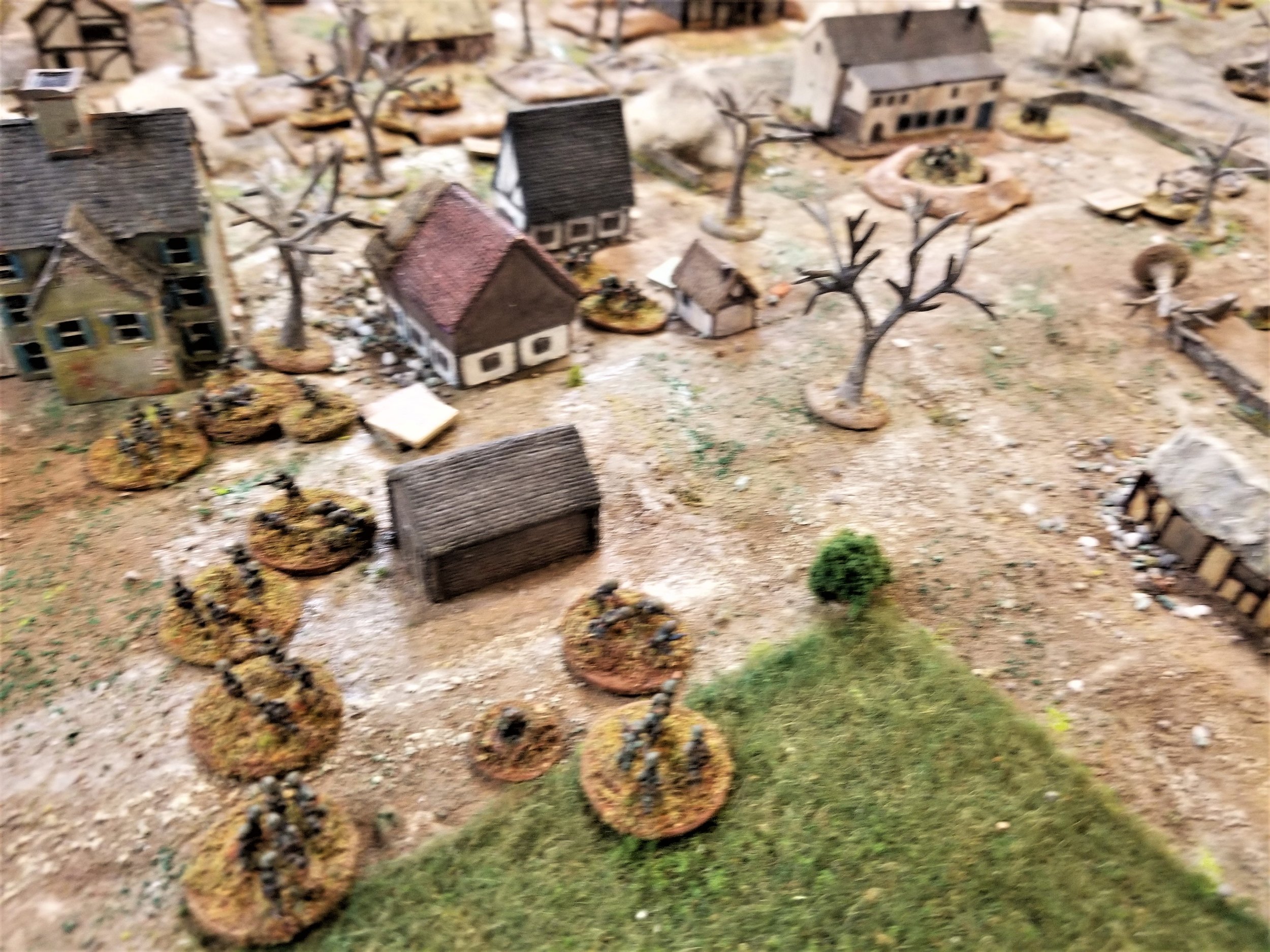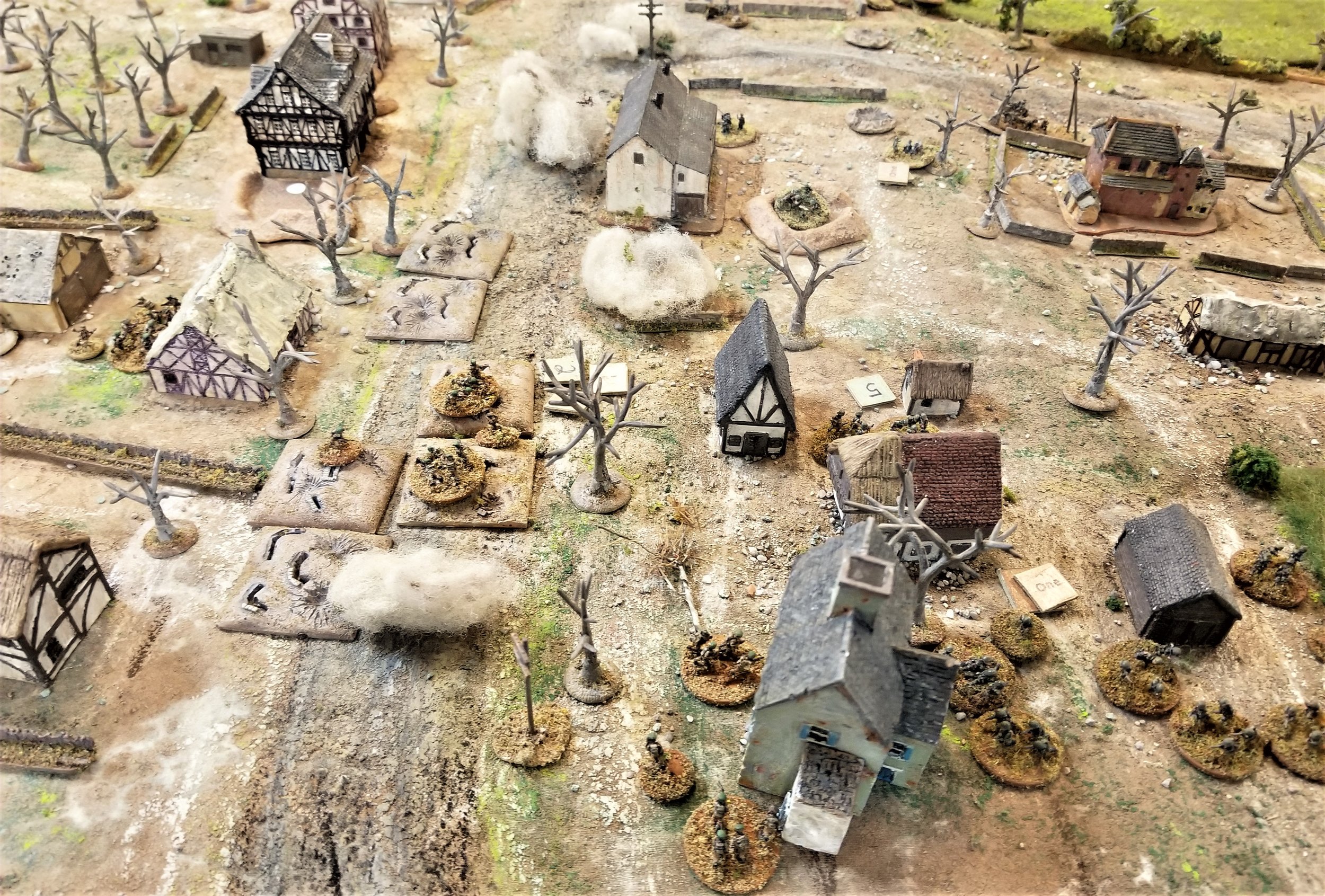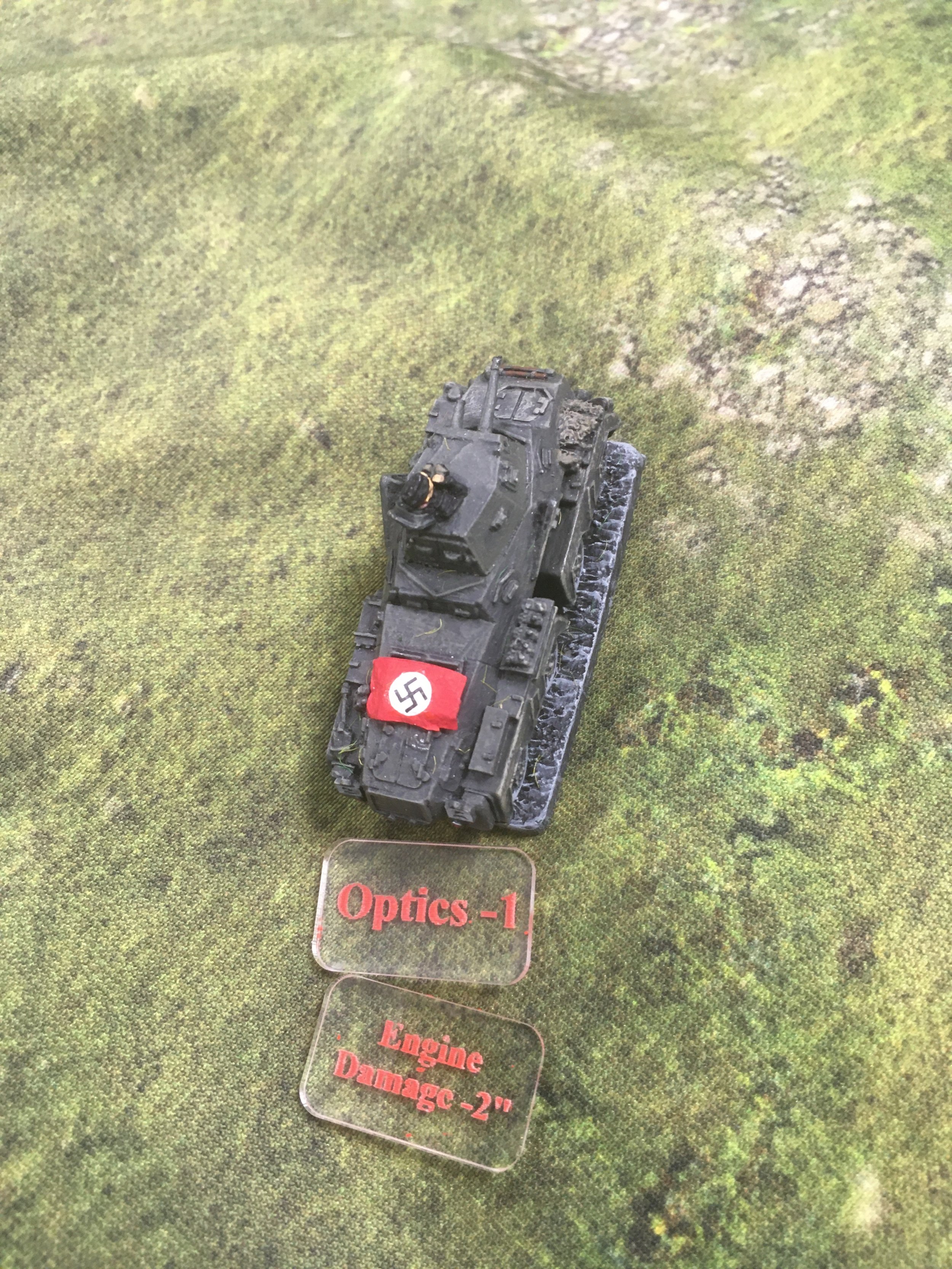The German's had to occupy two buildings; a house and a barn, within ten turns. The view of the table can be seen from the German start line on their western table edge, looking eastwards. The terrain consisted of a road running EW bounded by light woods to the north, south and east, and two gullies north and south. Large fields of crops were a feature of the centre plus the two building objectives.
Max and Clivey base force had two, two Big Men led Platoons each three squads plus a 50mm mortar, of Mechanised Infantry, plus two Panzer IIIG and two Panzer IIC each with a Big Man. For variable attachment they acquired a Company HQ SdKfz 251/10 with 37mm AT gun and Big Man overall CO.
My base force consisted of a command BT7, and a three BT7 Tank Platoon plus two Infantry Platoons of each three ten-man squads and a Big Man. My variable attachments were two BA10 armoured cars and a further Big Man led Platoon of Infantry. A sizeable force. The actual scenario called for T26's but I own BT7's instead.
My troops were significantly inferior in quality, being poor, and less than half the amount of Big Men (3:7).
However, unperturbed I decided to put up a helluva fight and sell my men's lives dearly (rare for me!).
I had to deploy within 12" of my table edge. My BT7 Command was to arrive upon the relevant 'Reinforcements' card being drawn on my baseline (turn 3). However, my variable attachment BA10's and Infantry Platoon could arrive on the southern table edge, again upon the relevant 'Reinforcements' card (turn 4). I had planned that my BA10's would turn up in the southern wood and my infantry in the SE wood. The problem was to make sure that these areas, in particular the southern wood stayed out of enemy control ensuring my troops safe arrival.
I deployed my BT7's in light woods at the SE table corner hoping to blast anything that appeared in the centre or near the southern wood.
One infantry Platoon was deployed in light woods behind the house objective, the other behind a field of crops adjacent to it.
Fakes were deployed one between the infantry Platoons and one in front of the BT7's. Their job was to identify enemy blinds ASAP preventing them from using swift movement and particularly the German 'Rapid Deployment' card. Their secondary task was to make the German's think that they were infantry Platoons. Finally My BT7 command was to arrive in the extreme NE corner and make the German's think it was massed armoured reinforcements.
As all of Max and Clivey's commands were in vehicles they would almost be spotted automatically at first 'Tea Break'. I had given up all hope of holding the barn as it was too close to the German's much faster moving troops.
My 'Blinds Move' card turned up first . I decided to reserve all dice to spot and fire later in the move, if necessary, after seeing where the boys schwerpunkt was to land.
Three German blinds entered the southern wood to my horror with another two behind it! I spotted a Platoon of Hanomag mounted Infantry and two fakes in the wood, with one of my fakes.
The next turns saw four other German blinds racing up the table. Two straight up the road and two in the western woods. I spotted the two road ones as another Platoon of Hanomag mounted infantry and two Panzer II's.
My BT7s engaged the halftracks in the wood with long range fire, spooking one badly enough that it dropped its occupants the other two retreated out of line of sight behind the wood.
One BT7 hit and destroyed a Hanomag in the centre which had occupied a field near the barn. A couple of German mothers would get telegrams from the Fuhrer!
I manouevered my fakes into the two gullies and pretended they were infantry Platoons, while all my troops played the waiting game.
The German blinds behind the southern woods turned out to be the Commander in his 37mm armed halftrack and two Panzer IIIGs. These sped round the wood to engage, albeit unsuccessfully, my BT7's at long range.
The next moves saw the German's take and occupy the barn and the adjacent fields to the north and south with their infantry.
The Panzer IIIs, using their Veteran status and Big Men advantage plus their 'Blitzkrieg' movement managed to fire successfully on the move, knocked out two BT7's and forced the remaining one to retire with a turret jam and knocked out 45mm main gun. Disastrous - it was down to my infantry now.
Just as things looked bad my Command BT7 appeared as a blind in the eastern woods. Max and Clivey, knowing me well suspected KV1's. The threat of the unknown blind, out of LOS worked wonders.
I moved an infantry Platoon blind into the cornfields near the house and my fake in the southern gully made a run for the barn through the fields making like more infantry.
Next turn my fakes were spotted by the boys whose looks turned to horror as two BA10's turned up in the southern woods and machine gunned the infantry section hunkered down there into a red ruin. I decided to occupy the gully again, but this time with a genuine Platoon of infantry. My other Platoon advanced into the second gully, whilst the third remained undetected behind the house in the woods.
The game degenerated into what only can be termed a helluva scrap. Under IABSM Soviet infantry are unpredictable. They have a very good tank killing capacity plus using the 'Uhraiee' card can get really nasty and assault when you least expect it. Their firing is not to hot though as they are only in possession of two initiative dice.
Net result is that German players get really nervous when playing against Ivan.
I decided that if I laid off the German's, their halftrack MG's would crucify me. Time was on my side as the German's had been held up by my reinforcements appearance. I rushed into the assault from the gully. Three Soviet squads Vs one German squad plus an MMG from a halftrack.
I lost heavily and was forced to retreat. As the boys Identified another Platoon in the gully I decided to reserve my dice making it difficult for them to advance upon me. As the position was shielded by crops. There was a stand-off here as the supporting Panzer IIs held their dice preventing me from moving either.
In the centre my infantry Platoon was down to 25%.
Panzer IIIs and 37mm Halftrack had also knocked out both BA10's although I did hit and destroy one Pz III with a rear shot.
Luckily my unit card came up at the beginning of the next turn and so I climbed my Platoon out of the gully and into an assault on one section of German infantry in the northern woods adjacent to the barn. They were wiped out to a man and I occupied the woods and fields. One Panzer II was knocked out by my Command BT7 which made a run for it and paid the ultimate price too.
It was the critical point of the game as I was in position to threaten the barn and its defenders.
The boys shot my Soviet platoon in the centre to pieces with MG support from the Hanomags and then advanced swiftly. One squad took the house and then discovered a Soviet Platoon 5" away in the woods. This fired at the "Tea Break' reducing the German defenders by 50%.
The game ended at turn ten with the German's holding the objectives but severely threatened in both. Taking them would have been difficult for my guys but the German's had only just done it in the time required.
The game was excellent and full of surprises on both sides. The telling factor was the support of the Hanomag mounted MGs and the superior fire and movement tactics of the German infantry, coupled with the large numbers of Big Men.
I was cautious for a change with my infantry but on the whole they performed admirably.
Kev






















































































